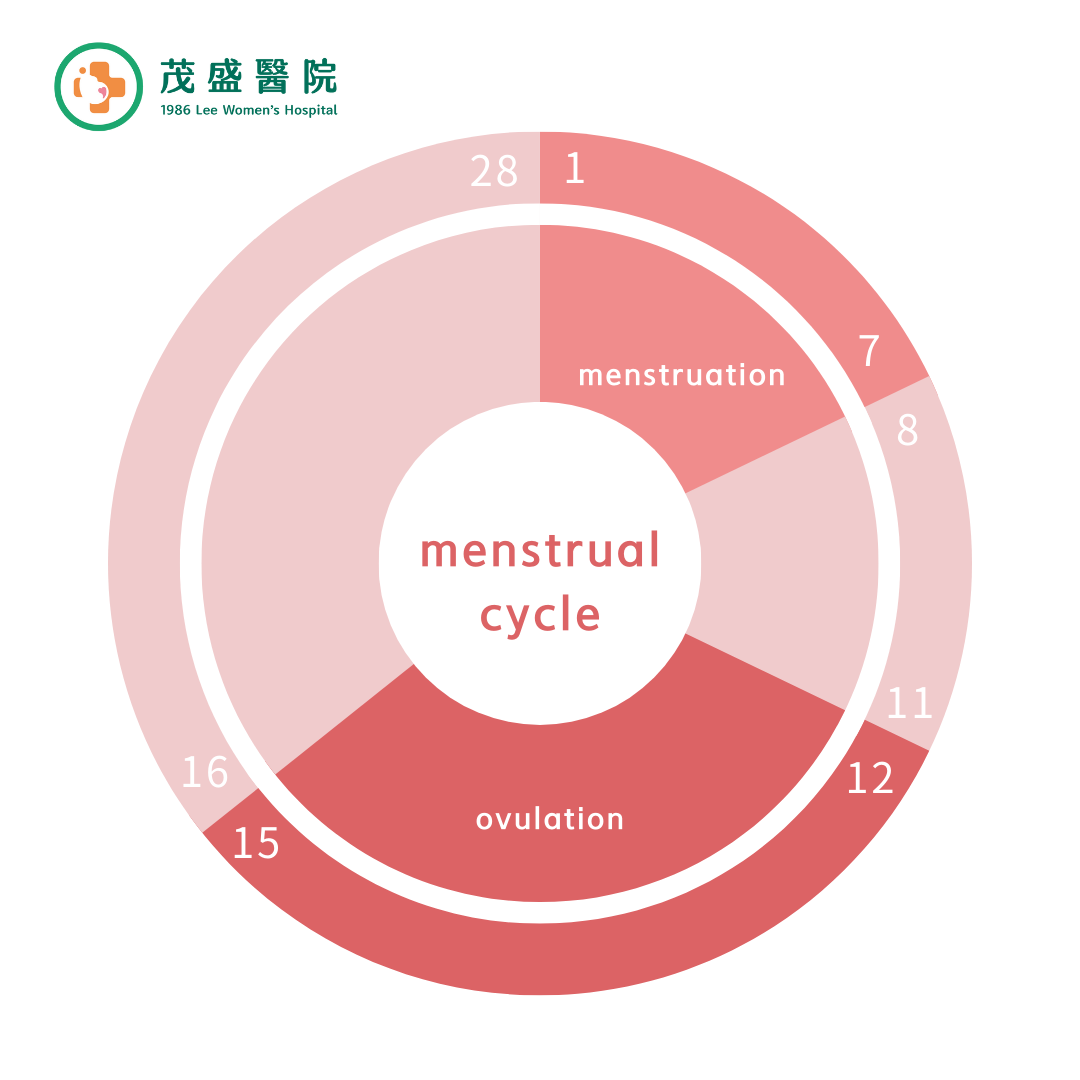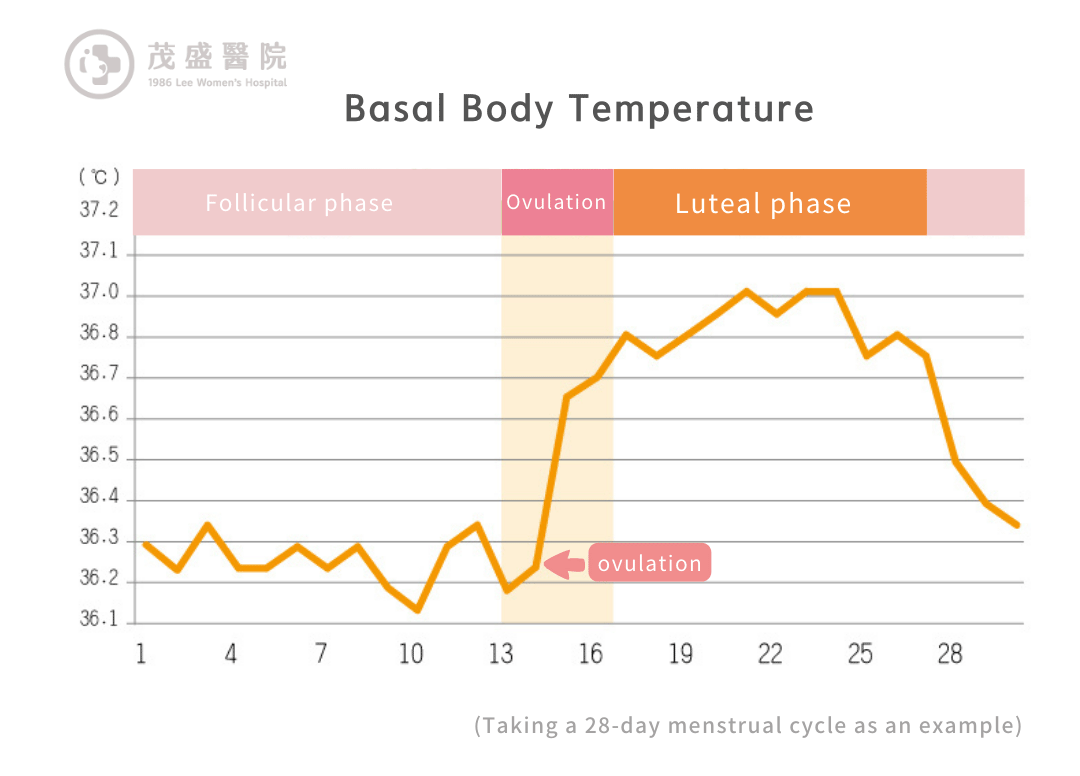Knowledge Sharing
Ovulation: Online calculator, symptoms, ovulation bleeding
What is the ovulation period? There is a stage in a woman's menstrual cycle called the ovulation period.
The average menstrual cycle is 28 days. The ovulation period can be calculated from the first day of menstruation, around the 14th day of the menstrual cycle, when the ovaries undergo ovulation.
Since the ovum can survive for about 24 hours after being released, and sperm can survive in the female body for 2-3 days, the two days before ovulation and the 24 hours after ovulation are considered the “fertile window”. During this time, the chances of conception are significantly higher.
About Ovulation
What is ovulation?
Ovulation is the period when the ovary ovulates. If the ovum is fertilized, it will move to the uterus to implant and become an embryo. If the ovum isn’t fertilized, the endometrium will peel off and become period blood.
How to calculate ovulation period?
The ovulation period can be calculated automatically using mobile apps. Nowadays, many software programs have convenient ovulation calculator allowing you to calculate ovulation and conception times. To understand how to calculate the timing precisely, let us explain.
Calculating the ovulation period to determine the prime fertility window
The average menstrual cycle lasts 28 days. Ovulation begins around 14 days of menstrual cycle. Ovum can survive for around 24 hours after being produced, and sperm can survive for 2-3 days in the female body. So the most optimal time for conception is 3 days before and after ovulation.

Is the ovulation period calculation always accurate?
If a woman's menstrual cycle length is consistently irregular, the accuracy of calculating the ovulation period will be lower. It is not recommended to rely on the general method of calculating the ovulation period or fertility calculators.
So, how can we calculate the ovulation period accurately? Although we can estimate the possible ovulation day, lifestyle habits, diet, medication, and psychological stress can all affect ovulation. Therefore, it is recommended to use ovulation test strips or ultrasound examinations for more accurate results.
Ovulation calculator
Please enter the duration of your menstrual cycle and the date of your most recent menstruation:
Last Menstrual Period:
*The calculation results are only for reference purposes. The ovulation period can change due to work and rest, stress, illness, and other factors. To accurately determine the ovulation period, it is recommended that you use ovulation test strips or go to the hospital for examination.
What are the symptoms of ovulation?
Females might have the following symptoms or signs during ovulation:
| The Symptoms of Ovulation | |
|---|---|
| Increase in vaginal discharge | The vaginal discharge during ovulation will be more like raw egg white, lasting around 2-3 days. |
| Ovulation pain | Some females may experience slight lower abdominal pain. |
| Ovulation bleeding | Slight brown discharge or petechiae, lasting 2-3 days. |
| Distending pain of breasts | Females’ breasts become more sensitive and might experience distending pain. |
Why does the cervical discharge increase during ovulation?
Cervical mucus, also known as cervical fluid, undergoes changes during ovulation, it becomes more watery and increases in quantity.
During ovulation, the cervical mucus has a transparent, jelly-like consistency similar to egg whites. It becomes more alkaline compared to mucus in the non-ovulation period .
This change in consistency and pH is primarily to facilitate the smooth passage of sperm through the cervix. It is also to neutralize the acidic environment of the vagina, providing protection for the sperm.
Do I need to see a doctor if I have ovulation bleeding?
Ovulation with bleeding is a common symptom during the ovulation period and is considered a normal physiological phenomenon. As long as the bleeding is minimal and lasts no more than 3 days, special medical attention is usually not needed.
However, if there is heavy bleeding or severe abdominal pain accompanying the bleeding, a medical examination is recommended.
Symptoms of ovulation bleeding:
- Bleeding color: Brownish blood streaks, occasionally accompanied by jelly-like discharge
- Bleeding amount: spotting, does not require pads
- Duration of bleeding: Approximately 1-3 days
Other symptoms: Some may experience bloating or mild lower abdominal pain
Does body temperature change during ovulation?
Measuring changes in basal body temperature (BBT) during ovulation requires a "basal body temperature thermometer" to detect subtle temperature changes.
Women typically experience a low-temperature phase from the start of their menstrual cycle until ovulation.
After that, they enter a high-temperature phase from the day after ovulation, with temperatures slightly higher (around 0.3-0.5℃ higher) than the pre-ovulation temperature.
Therefore, by recording body temperature, one can determine their ovulation day and ovulation period. However, measuring basal body temperature requires taking measurements consistently every morning upon waking up before engaging in any activities. Factors such as thick bedding or air conditioning can affect the accuracy of measurements, resulting in lower measurement effectiveness.

Will ovulation bleeding during the preconception period affect the chances of pregnancy?
There are many possible reasons for vaginal bleeding in women outside of their menstrual period. Not all bleeding is necessarily related to a medical condition. If there is spotting two weeks after menstruation, it may be ovulation bleeding. After the ovaries release an egg, there may be slight shedding of the uterine lining if there is low progesterone. However, the bleeding generally stops within 1-3 days, and it is considered a normal physiological phenomenon, so there is no need to be overly concerned.

Does ovulation bleeding affect the chances of pregnancy? In normal circumstances, ovulation bleeding does not affect fertility. However, bleeding may impact sexual activity during the ovulation period. If a couple has been actively trying to conceive for a year without success, it is recommended to seek consultation at an infertility clinic.
Does ovulation have the highest pregnancy rate?
Many couples who are trying to conceive believe the highest probability of pregnancy occurring only during the ovulation period. However, prolonging the time between ejaculations can lead to sperm aging and reduce the chances of pregnancy. Therefore, regular intercourses (approximately every 3-5 days) helps maintain sperm in the most favorable condition for conception.
Furthermore, having intercourse two days before and after ovulation actually carries the same pregnancy probability as having intercourse on the day of ovulation. Therefore, it is recommended to have sexual intercourse every 3-5 days. This can increase the pregnancy rate more effectively than solely focusing on calculating the ovulation period.
Age also affects the probability of pregnancy!
When preparing for pregnancy, besides calculating the ovulation period and fertile window to increase the chances of conception, other factors should also be considered. Age is crucial. Women under 30 have a monthly probability of 25-30% of a successful pregnancy. However, after 35, the chances of conception decline rapidly. Statistics show the natural pregnancy rates for advanced maternal age are as follows:
| Maternal age | Pregnancy rate |
|---|---|
| 30-34 | 15% |
| 35-39 | 10% |
| 40-44 | 5% |
| 45 and above | 1% |
Other ways to predict ovulation
Transvaginal Ultrasonography
Ultrasonography may see the size of the follicles and the thickness of the endometrium to predict ovulation. This has to be done in clinics or hospitals, and tracked for a few days.
Ovulation Prediction Kit
24-36 hours before ovulation, the concentration of luteinizing hormone (LH) will peak and then be released in urine. Females may use the ovulation prediction kit to test for ovulation. The peak of LH concentration will only last for 24 hours. The test should be taken every 6-8 hours (3 times a day).

Basal Body Temperature
Upon waking up, one should test the body basal temperature. That's when the body temperature is lowest. The body temperature of females will typically reach the lowest before ovulation and rise approximately 0.3-0.6°C after ovulation.
Viginal Discharge Observation
The uterus secretes mucus 2-4 days before ovulation. During this period of time, there will be a transparent vaginal discharge, with an increase in amount.
FAQ: Will conception occur during the fertile window?
Is the chance of pregnancy highest during ovulation?
This is a common myth among couples preparing for pregnancy. Actually the chances of pregnancy between having sex two days before and after ovulation, and during ovulation are the same. It is suggested that couples should have sex every 3-5 days.
What other factors affect the chances of conception during the fertile window? A woman's prime fertility period is typically between the ages of 25 and 35, with a significant decline in fertility rates after 35. On the other hand, men tend to have higher fertility rates before 35-40. Therefore, if couples are planning for pregnancy, age should be a major factor to consider!
In addition to age, various factors can impact fertility, including both partners' reproductive health, quality of sperm and eggs, underlying diseases, and more.
Does the basal body temperature (BBT) change during the fertile period?
A woman's basal body temperature undergoes changes with the arrival of the fertile period, which is why many couples trying to conceive measure their BBT to track their fertile window. By recording the temperature difference between the "high" and "low" temperatures and the duration of each phase, one can determine their ovulation period.
Under normal circumstances, a woman's body temperature slightly increases by 0.3-0.6°C after ovulation due to hormonal changes, and it remains elevated for 1-2 days before menstruation.
It is important to note that measuring the menstrual cycle using a "basal body temperature thermometer" is different from using a regular thermometer. The scale of a basal body temperature thermometer is more precise. It must be measured immediately upon waking up in the morning to detect subtle temperature changes.
What are the symptoms during the fertile period?
Symptoms during the ovulation period may include:
- Increased vaginal discharge: There may be an increase in the amount of discharge during the fertile window.
- Ovulation pain: Some women may experience mild discomfort in the lower abdomen during ovulation.
- Ovulation bleeding: There may be a small amount of brownish discharge or spotting during the fertile period.
- Breast tenderness: Breasts may become sensitive and prone to swelling and pain.
What changes occur in the body after ovulation?
After ovulation, the body enters the luteal phase of the menstrual cycle, and during this time, the following changes occur:
- Body temperature remains elevated until menstruation.
- Cervical mucus decreases and transitions to a thicker, yellowish-white discharge.
- Due to changes in estrogen and progesterone, some women may experience premenstrual syndrome (PMS) symptoms, such as mood swings and physical discomfort.
Infertility physicians’ suggestions
It is not true that every female has a 28-day menstruation period, and some have irregular menstruation cycles. The most accurate way to predict ovulation is ultrasonology.
If you have experienced the following situation, please seek medical assistance:
- Irregular menstruation period
- Has been diagnosed with PCOS or ovulation disease
- Has been recording basal body temperature for a while but didn’t observe obvious high-temperature period
- Hasn’t got pregnant after 1 year of preparation
- Start to prepare for pregnancy at or after 40




